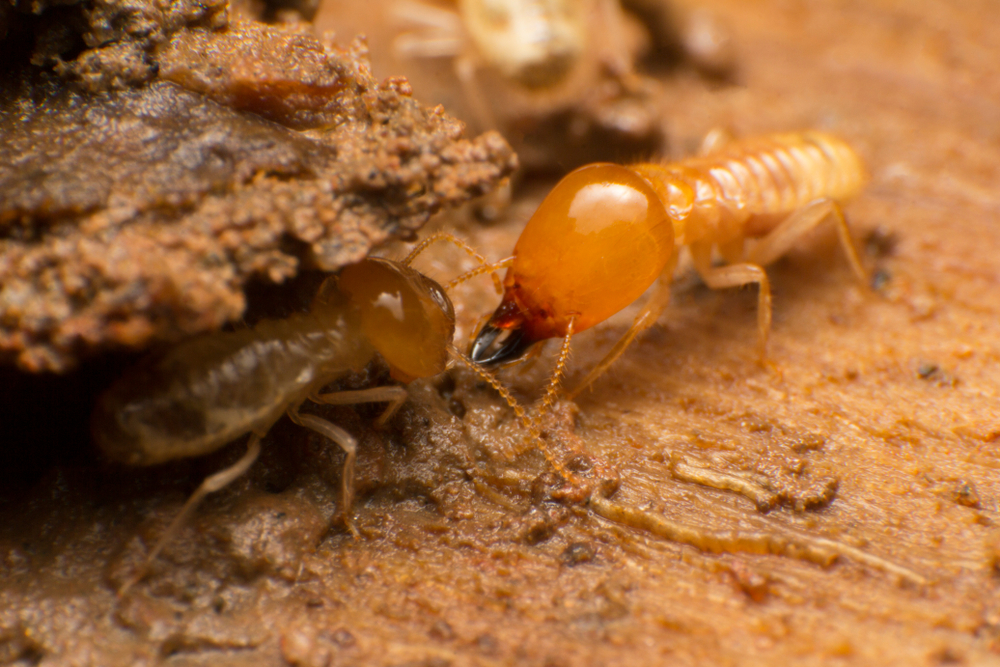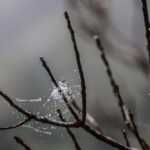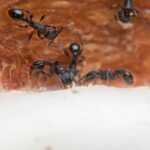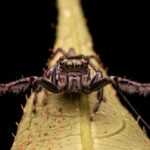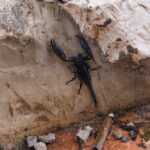What Causes Termites? Key Factors You Need to Know
Termites are attracted by moisture, wood-to-soil contact, and building gaps.
- Termite infestations cause over $5 billion in damage annually in the U.S., primarily due to factors such as moisture, wood-to-soil contact, and cracks in building exteriors.
- Preventive measures like reducing moisture, proper firewood storage, and sealing cracks are essential in mitigating the risk of termite infestations.
- Early detection of termite signs, such as mud tubes and wood damage, is crucial for effective control and minimizing costly repairs.
Understanding Termite Infestations
Termite infestations can be devastating, causing significant damage to wooden structures and leading to costly repairs. In the United States alone, termites cause over $5 billion in damage annually, making them silent destroyers and a serious threat to homeowners. These pests primarily feed on cellulose found in plant material, including wood, which is why they are often found in homes and buildings.
Detecting a termite infestation early is challenging because home invading termites forage continuously and can remain hidden for long periods. Wood inside homes near house foundations often attracts them, providing easy access and protection.
Excess moisture in wood, often due to high humidity, can make it more vulnerable to termite damage. Understanding these factors can help you implement effective prevention and control measures.
Primary Causes of Termite Infestations
To prevent termite infestations, it’s essential to identify and address the primary causes that attract termites. The main factors that lead to termite infestations are moisture, wood-to-soil contact, and cracks and gaps in building exteriors that attract termites.
Each of these factors provides termites with the conditions they need to thrive and gain termite access to your home.
Moisture
Moisture supports termites’ survival and colony formation, making it one of the primary reasons they infest homes. Subterranean species, in particular, need enough moisture in the soil to survive. Areas with high humidity or moisture issues, like leaky pipes or standing water, are especially vulnerable. Proper ventilation and timely moisture problem resolution can reduce the risk of attracting termites.
Dampwood and subterranean termites thrive in humid environments, making moisture-rich areas especially vulnerable. High humidity boosts their activity and reproduction, so maintaining dry conditions in and around your home is crucial to prevent termite problems.
Wood-to-Soil Contact
Direct wood-to-soil contact offers termites easy access to exposed wood inside structures, raising the risk of infestation. This is common around the foundation of your home and fence posts. Reducing this contact wherever possible helps mitigate the risk.
Keeping wood at least 18 inches away from foundation walls and ensuring structures don’t touch the ground can reduce termite invasions. Regular inspection and maintenance of areas where wood meets soil are essential for effective termite control.
Cracks and Gaps
Cracks and gaps in building exteriors serve as entry points for termites, facilitating infestations. Common areas include cracks around windows and doors, window sills, door frames, fascia boards, and the home’s foundation.
Inspecting and sealing these cracks regularly can prevent termite access and reduce infestation risks.
Types of Termites and Their Preferences
The most common types of home-invading termites include Dampwood, Drywood, and Subterranean termites. Each type has specific preferences and habitats, which influence their behavior and the areas they are likely to infest.
Knowing these preferences helps identify potential risks and take preventive measures.
Subterranean Termites
Subterranean termites primarily live in the ground and thrive in soil environments. They are attracted to moist soil and wood in contact with the soil, making them particularly common around the foundation of your home and other areas where wood meets soil. These termites cannot survive without enough moisture, which is why they often build mud tubes to maintain the necessary humidity levels and protect themselves from dehydration.
These mud tubes serve as protective pathways, allowing subterranean termites to travel safely from their colonies in the soil to food sources above ground. Knowing these behaviors and habitat preferences help identify risks and take preventive measures.
Drywood Termites
Drywood termites can infest wooden structures without needing direct soil contact. They prefer dry, exposed wood and are often found in attics, furniture, laundry rooms, and other wooden structures within homes. Unlike subterranean termites, drywood termites do not require high moisture levels to survive, making them a threat to various parts of your home.
Dampwood Termites
Dampwood termites prefer very moist wood and are typically found in regions with high humidity. They thrive in wet, decaying wood, often associated with high humidity or water damage. These termites are commonly found in areas such as basements, crawl spaces, around leaky pipes, or water-damaged wood.
Dampwood termite colonies can grow quite large, with populations peaking at more than 12,000 adults and 1 million other individuals. Because dampwood termites prefer moist environments, addressing water damage or high humidity in your home is crucial to prevent infestations.
Environmental Factors Influencing Termite Activity
Geographic location and seasonal changes significantly influence termite activity. Warmer climates are more susceptible to termite infestations, and termite activity typically peaks during the warmer months, particularly in rainy seasons.
Seasonal changes in humidity levels directly impact termite behavior and their likelihood of invading homes.
Humid Environments
Termites primarily thrive in areas with high humidity, often sealing their colonies to maintain the necessary moisture. Warm weather and consistent humidity increase termite activity, making regions with these conditions more vulnerable. Florida’s climate, for instance, is ideal for termites due to high temperatures and moisture levels.
Mud tubes serve a critical role for subterranean termites, as they help maintain moisture levels essential for their survival while protecting them from dehydration. These structures also provide a means for termites to transport moisture and food safely.
Proper ventilation and addressing moisture issues in your home help reduce the risk of termite infestations.
Seasonal Changes
Termite swarms typically occur during specific seasons, often in warmer months when humidity rises. Swarming usually occurs during spring, indicating that a colony is mature and ready to reproduce.
Knowing the seasonal patterns of termite activity helps you take preventive measures during high-risk periods.
Preventive Measures to Keep Termites Away
Preventing termite infestations involves addressing factors that attract them and provide access to your home.
Reducing Moisture
Eliminating moisture is crucial for preventing termite infestations. Fixing plumbing leaks, avoiding standing water near the foundation of your home, and ensuring proper ventilation reduce humidity levels, while removing standing water minimizes the risk.
Sealing gaps and keeping wood dry further reduce moisture problems, creating an environment less conducive to termite activity.
Proper Firewood Storage and Mulch Management
Store firewood away from the home to minimize termite attraction. Keeping it at least 18 inches away and elevating it off the ground helps prevent access and reduce risks. Avoid excessive mulch near the home’s foundation, as mulch retains moisture and can attract termites.
Sealing Cracks and Gaps
Regularly checking and filling cracks in building exteriors prevents termite access. Sealing and reinforcing cracks and fissures in walls, foundation walls, fascia boards, and around plumbing and electrical lines creates barriers against termites.
Identifying Termite Infestations Early
Early detection of termite infestations is crucial for preventing severe damage and costly repairs. Signs of wood termites’ presence include mud tubes, soft wood, discarded wings, and termite droppings.
Regular inspections by professional pest control companies help detect roof rat infestations, early signs of activity, and prevent infestations.
Swarming Insects
Swarming termites, typically winged, leave colonies to mate and establish new ones. Their presence generally indicates a nearby colony and a risk of infestation.
Swarming occurs during warm, humid months, coinciding with increased structural risks for homes.
Mud Tubes
Mud tubes are constructed by subterranean termites as protective pathways, allowing them to travel safely from their colonies to food sources. These pencil-sized structures connect the colony to food sources and indicate termite activity.
Wood Damage
Wood that sounds hollow when tapped strongly indicates termite infestation. Identifying wood damage early is crucial to preventing severe structural damage and costly repairs.
Regular inspections and prompt action can help prevent termites and protect your home from termite infestations.
Effective Termite Control Solutions
Effective termite control combines professional services and preventive measures. Professional pest control companies offer comprehensive approaches to eliminate termites and provide ongoing protection.
Chemical Treatments
Chemical treatments effectively eliminate termite colonies. Liquid termiticides create a barrier lasting up to five years, preventing subterranean infestations. These treatments penetrate wood deeply, targeting hidden colonies and ensuring long-term protection.
Chemical treatments are crucial for proactive termite management and protecting homes from potential damage.
Bait Systems
Termite bait systems effectively control infestations. They involve placing termiticide-treated cellulose in the ground, which termites consume and spread to their colonies, eradicating them over time. These systems contain slow-acting insecticides that ensure comprehensive elimination.
This method targets termites’ nesting areas, gradually reducing the population and ensuring effective control.
Professional Inspections and Free Inspection Services
Regular pest control inspections by a reputable pest control company are vital for maintaining a termite-free home. Professionals can identify potential issues before they escalate, offering homeowners peace of mind. Signs of infestation, like swarming insects and visible wood damage, can be detected during inspections, allowing timely intervention.
Many pest control companies offer free inspection services to help you stay ahead of termite problems.
Understanding what causes termites and knowing how to prevent and control infestations can save you from significant structural damage and costly repairs. By addressing the primary causes of termite attraction—moisture, wood-to-soil contact, and cracks and gaps—you can significantly reduce the risk of infestations. Recognizing the signs of termite activity and seeking professional help for inspections and treatments will further protect your home. Stay vigilant and proactive to keep these destructive pests at bay.
Frequently Asked Questions
What are the main causes of termite infestations?
Termite infestations primarily arise from moisture, wood-to-soil contact, and gaps or cracks in building exteriors. Addressing these issues can significantly reduce the risk of termite problems.
How can I reduce the risk of termite infestations in my home?
To effectively reduce the risk of termite infestations, focus on minimizing moisture, storing firewood properly, managing mulch, and sealing any cracks and gaps in your home. These essential measures will help protect your property from potential damage.
What are the signs of a termite infestation?
The signs of a termite infestation include mud tubes, soft or hollow-sounding wood, discarded wings from swarming termites, and termite droppings. Addressing these indicators promptly can prevent further damage to your property.
What types of termites are most common in homes?
The most common termites that invade homes are Dampwood, Drywood, and Subterranean termites. It’s important to understand these types to effectively manage and prevent infestations.
How can professional pest control services help with termite infestations?
Professional pest control services can effectively manage and prevent termite infestations through comprehensive solutions such as chemical treatments, bait systems, and regular inspections for [properties in North Las Vegas]. This level of expertise ensures a thorough approach to protecting your property from damage.
